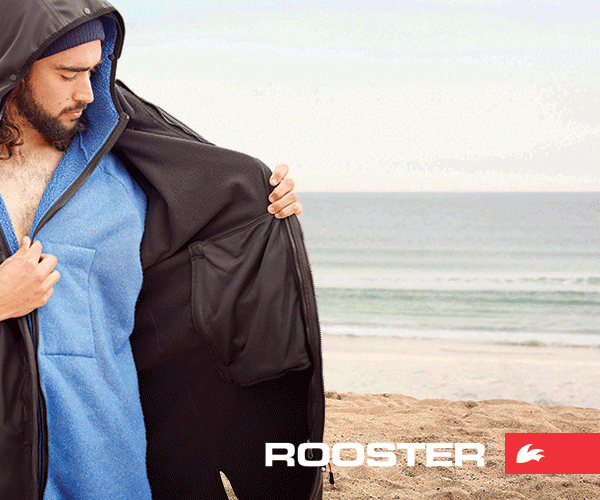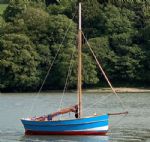-202403121604.gif)












Boats for sale
| Laser XD 203301 Upminster |
 |
| J24 (Sail No. 4239) Dartmouth |
 |
| Laurent Giles 'Jolly Boat' Exeter |
 |
List classes of boat for sale |
Obstruction or not? |
Post Reply 
|
| Author | |||
craiggo 
Really should get out more 

Joined: 01 Apr 04 Location: United Kingdom Online Status: Offline Posts: 1810 |
 Post Options Post Options
 Quote Quote  Reply Reply
 Topic: Obstruction or not? Topic: Obstruction or not?Posted: 30 Aug 16 at 9:35am |
||
|
Had an interesting pursuit race last night where an incident took place just after rounding a mark.
The scenario is: White approaches a mark of the course positioned just in the mouth of an inlet into the main estuary on a stand tight reach. Blue (a significantly quicker boat) overstood significantly and approached the mark on a beam reach, with no overlap. At the mark white hardened up to a close hauled course at which point blue gained an overlap to leeward. Almost immediately blue hailed for water to tack. White continued as the far bank of the inlet was still at least 10 boat lengths away. Blue bore away slightly before luffing into the tack during which time white kept clear. As blue went beyond close hauled white was still continuing on stbd and no contact occurred. Blue then hailed protest. So the rules are reasonably clear at a continuing obstruction, but I now that their is no zone for obstructions, but surely there has to be some limit to prevent people calling for water when not necessary. Blue was clearly right of way boat and therefore entitled to luff white but didn't do so. White did not tack should she have? 
|
|||
|
OK 2129
RS200 411 |
|||
 |
|||
jeffers 
Really should get out more 

Joined: 29 Mar 04 Location: United Kingdom Online Status: Offline Posts: 3048 |
 Post Options Post Options
 Quote Quote  Reply Reply
 Posted: 30 Aug 16 at 10:05am Posted: 30 Aug 16 at 10:05am |
||
|
When hailed for room for an obstruction the hailed boat is required to respond by either hailing 'you tack' or by tacking herself.
Relevant rules 20.1 and 20.2. The only question mark I can think of is that white was of the opinion that she could not give room so was not required to do so (19.2c). As both boats have to tack it is clear (from your drawing) that a course change is required. Blue was also only entitled to sail her proper course and not above it as the overlap was established to leeward from astern (luffing rights do not exist per se in the current rules it is a restriction on whether or not you are allowed to sail above your proper course which is controlled by how the overlap was established. IMO what blue should have done is slow sufficiently to either tack immediately at the mark behind white or get up to windward of her if she was that much quicker. It is clearly an obstruction too as per the definitions in the rules:
Edited by jeffers - 30 Aug 16 at 10:06am |
|||
|
Paul
---------------------- D-Zero GBR 74 |
|||
 |
|||
Brass 
Really should get out more 
Joined: 24 Mar 08 Location: Australia Online Status: Offline Posts: 1146 |
 Post Options Post Options
 Quote Quote  Reply Reply
 Posted: 30 Aug 16 at 10:54am Posted: 30 Aug 16 at 10:54am |
||
Firstly, thanks for a clearly described and diagrammed scenario. You say 'surely there has to be some limit to prevent people calling for water when not necessary'. RYA has recently published Appeals 2016/1 (quoted below) that makes it clear that this is not so. The rationale for this is that a situation may arise where an obstruction may be perceptible to the hailing boat (say a submerged rock or, say, at sea, a container), which may not be perceptible to the hailed boat. The desire is that the hailed boat should respond first and ask questions afterwards. Same reasoning applies if W thinks that B was not close hauled or above when she hailed, see Appeal 2016/1 Answer 2. If W doesn't like it, her remedy is to respond in accordance with rule 20.2 than protest B. When B hailed for room to tack, W was required, in accordance with rule 20.2, to respond, either by immediately hailing 'you tack' and giving B room to tack and avoid her, or to tack as soon as possible. As you described the situation, W did not respond as required and thus broke rule 20.2. B should expect to win the protest. As to rule 17, W would have a very hard time persuading a protest committee that B's proper course was not to tack away from the obstruction, and that luffing into a tack was not part of that proper course.
Edited by Brass - 30 Aug 16 at 11:06am |
|||
 |
|||
Presuming Ed 
Really should get out more 
Joined: 26 Feb 05 Location: United Kingdom Online Status: Offline Posts: 641 |
 Post Options Post Options
 Quote Quote  Reply Reply
 Posted: 30 Aug 16 at 10:56am Posted: 30 Aug 16 at 10:56am |
||
Question is, was blue approaching the obstruction when she hailed. RYA appeal 2016/2 touches on this point:
A larger boat may well need to tack before a smaller one - deeper draft, slower to tack etc. Did any factor such as this apply? As mentioned, the only response that can be made to a hail for room to tack is either to tack or hail "you tack". If the hailed boat believes that the hail was premature (etc), she should respond properly and then protest.
Edited by Presuming Ed - 30 Aug 16 at 11:06am |
|||
 |
|||
craiggo 
Really should get out more 

Joined: 01 Apr 04 Location: United Kingdom Online Status: Offline Posts: 1810 |
 Post Options Post Options
 Quote Quote  Reply Reply
 Posted: 30 Aug 16 at 11:31am Posted: 30 Aug 16 at 11:31am |
||
|
Thanks for that.
I believe white assumed that as there was navigable water to leeward, that blue could bear away to get enough separation to tack and then duck white, and therefore the request was made prematurely. What white didn't anticipate was the requirement to tack or hail "you tack" so far from the obstruction then protest for making an early call. The latter would surely be hard to prove in a protest and therefore highlights a potential issue with the rules whereby a leeward overlapping boat can hail to avoid an obstruction which is still a long way away in order to tactically gain from tacking away, with little fear that the other boat will win the protest on whether they were close to the obstruction or not. Anyway, many thanks for the responses. Hopefully it will clear things up a touch! |
|||
|
OK 2129
RS200 411 |
|||
 |
|||
jeffers 
Really should get out more 

Joined: 29 Mar 04 Location: United Kingdom Online Status: Offline Posts: 3048 |
 Post Options Post Options
 Quote Quote  Reply Reply
 Posted: 30 Aug 16 at 11:56am Posted: 30 Aug 16 at 11:56am |
||
Plus if blue was significantly faster than W she was approaching faster and needed to call earlier to ensure that she could start her tack safely. Blue may also not know the layout of the seabed in that area so was erring on the side of caution. Bottom line is W was required to respond and did not do so.
|
|||
|
Paul
---------------------- D-Zero GBR 74 |
|||
 |
|||
Post Reply 
|
| Forum Jump | Forum Permissions  You cannot post new topics in this forum You cannot reply to topics in this forum You cannot delete your posts in this forum You cannot edit your posts in this forum You cannot create polls in this forum You cannot vote in polls in this forum |
Bulletin Board Software by Web Wiz Forums® version 9.665y
Copyright ©2001-2010 Web Wiz
Change your personal settings, or read our privacy policy
Copyright ©2001-2010 Web Wiz
Change your personal settings, or read our privacy policy











 Printable Version
Printable Version Delicious
Delicious Digg
Digg Facebook
Facebook Furl
Furl Google
Google MySpace
MySpace Newsvine
Newsvine reddit
reddit StumbleUpon
StumbleUpon Twitter
Twitter Windows Live
Windows Live Yahoo Bookmarks
Yahoo Bookmarks Topic Options
Topic Options